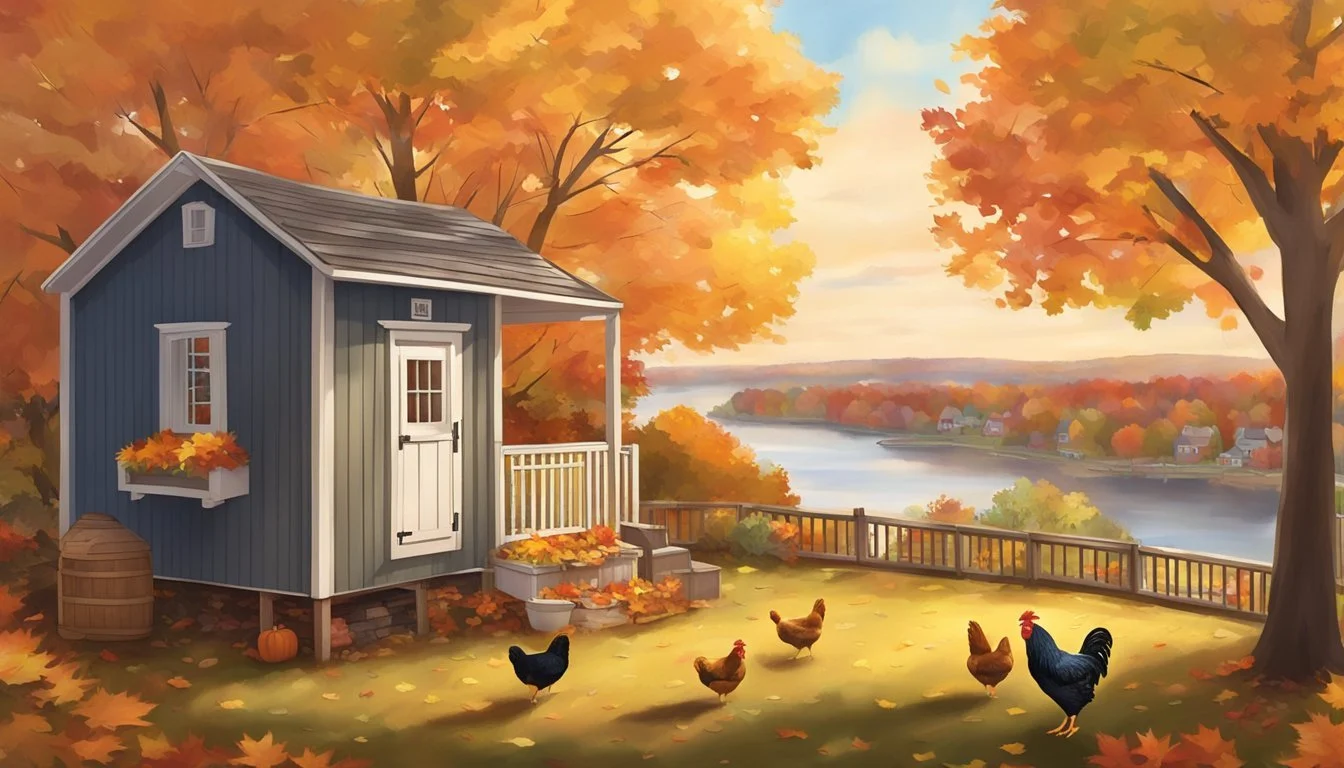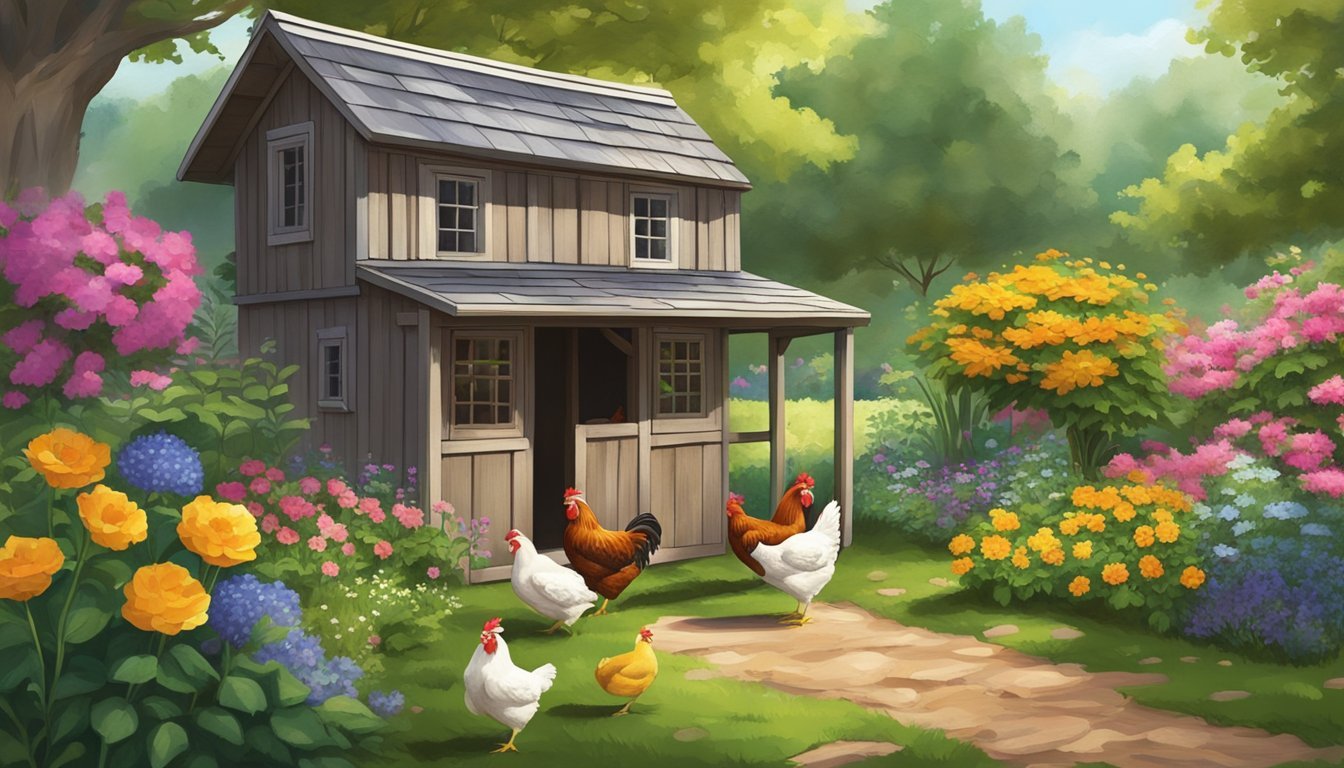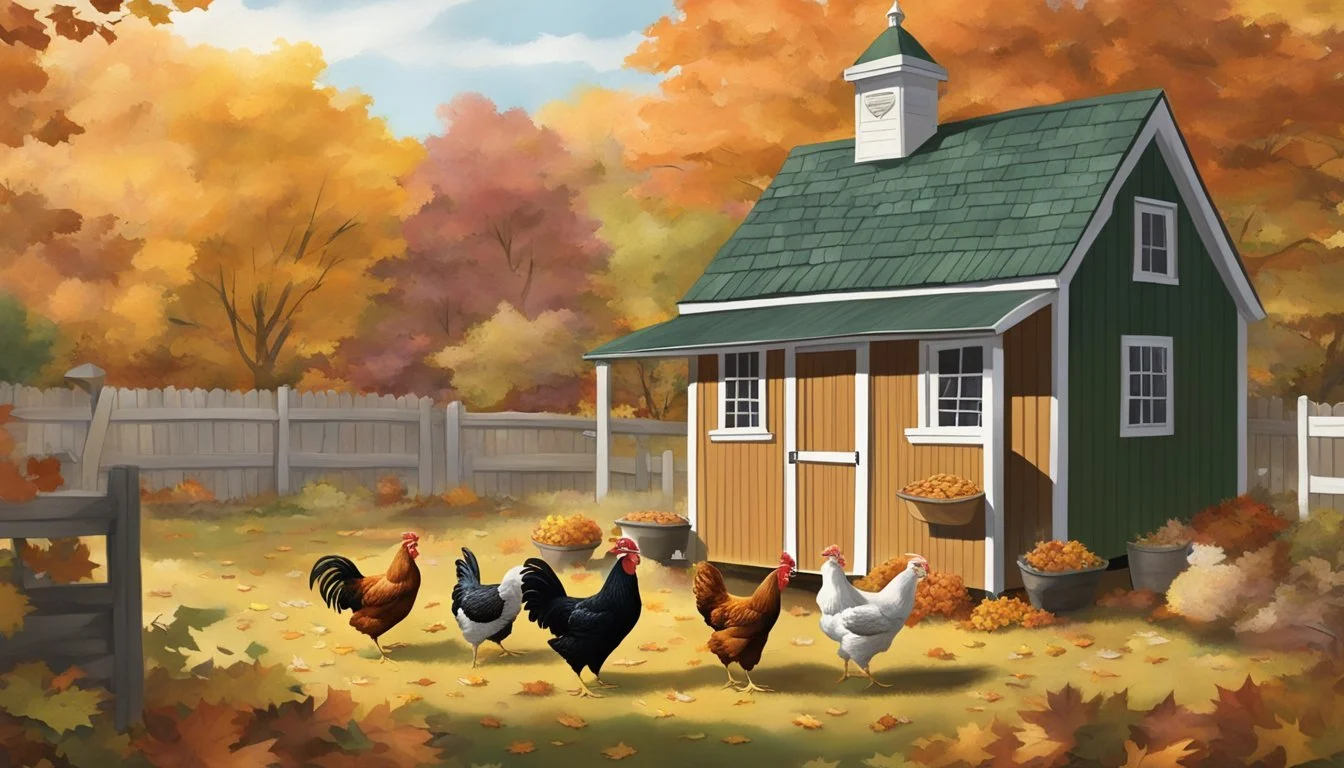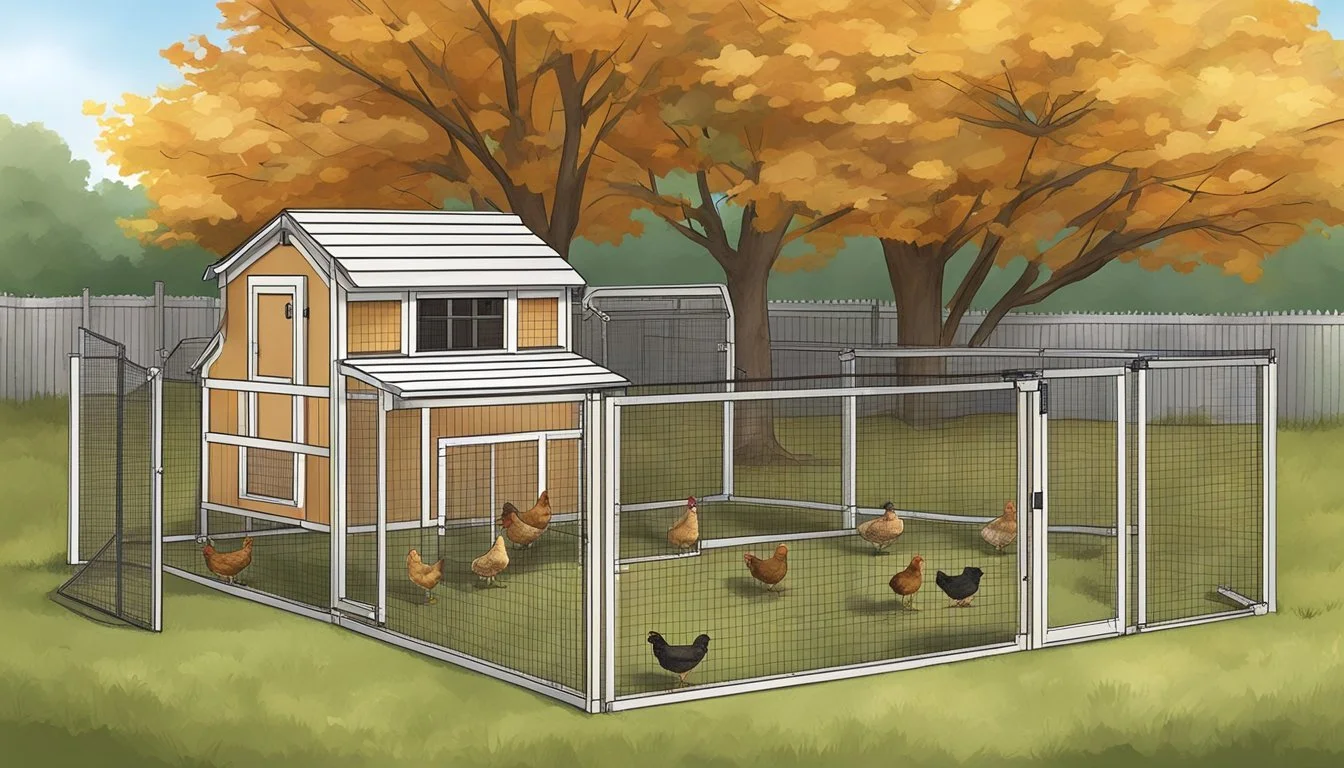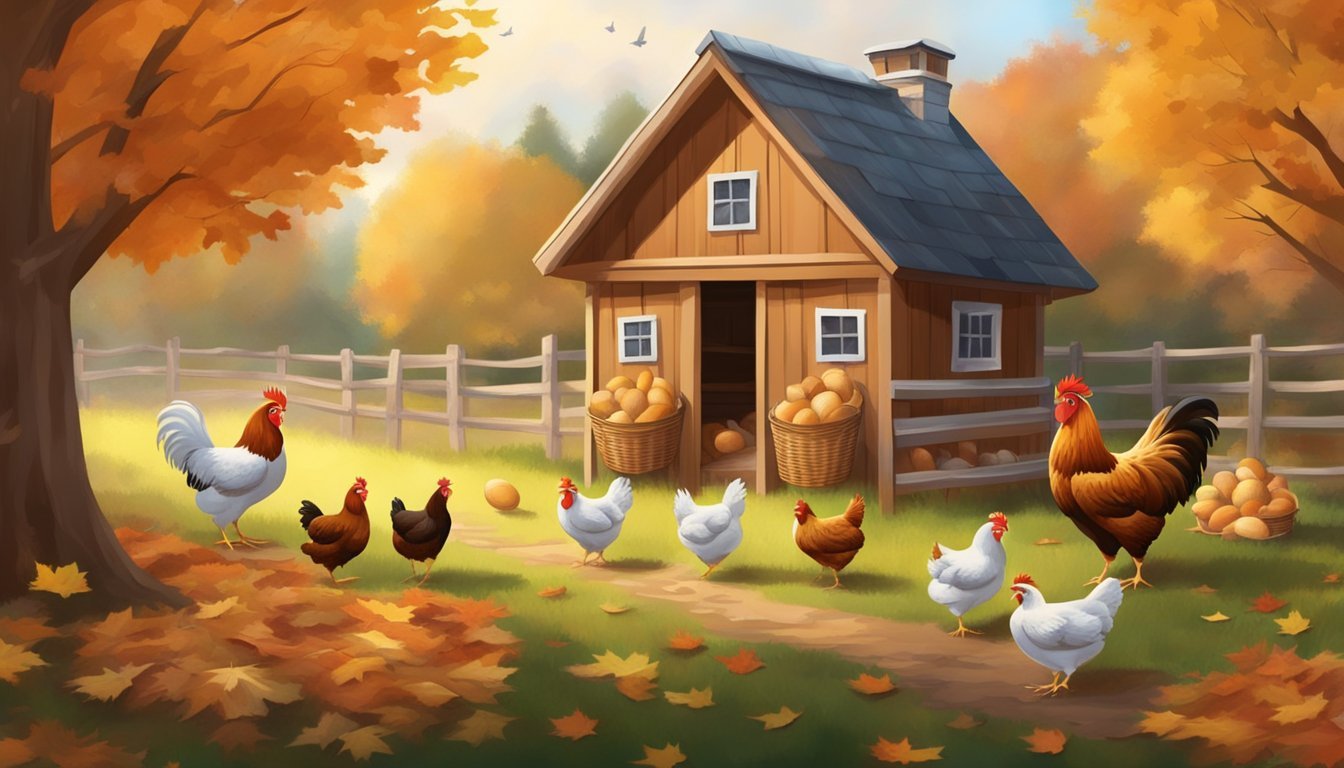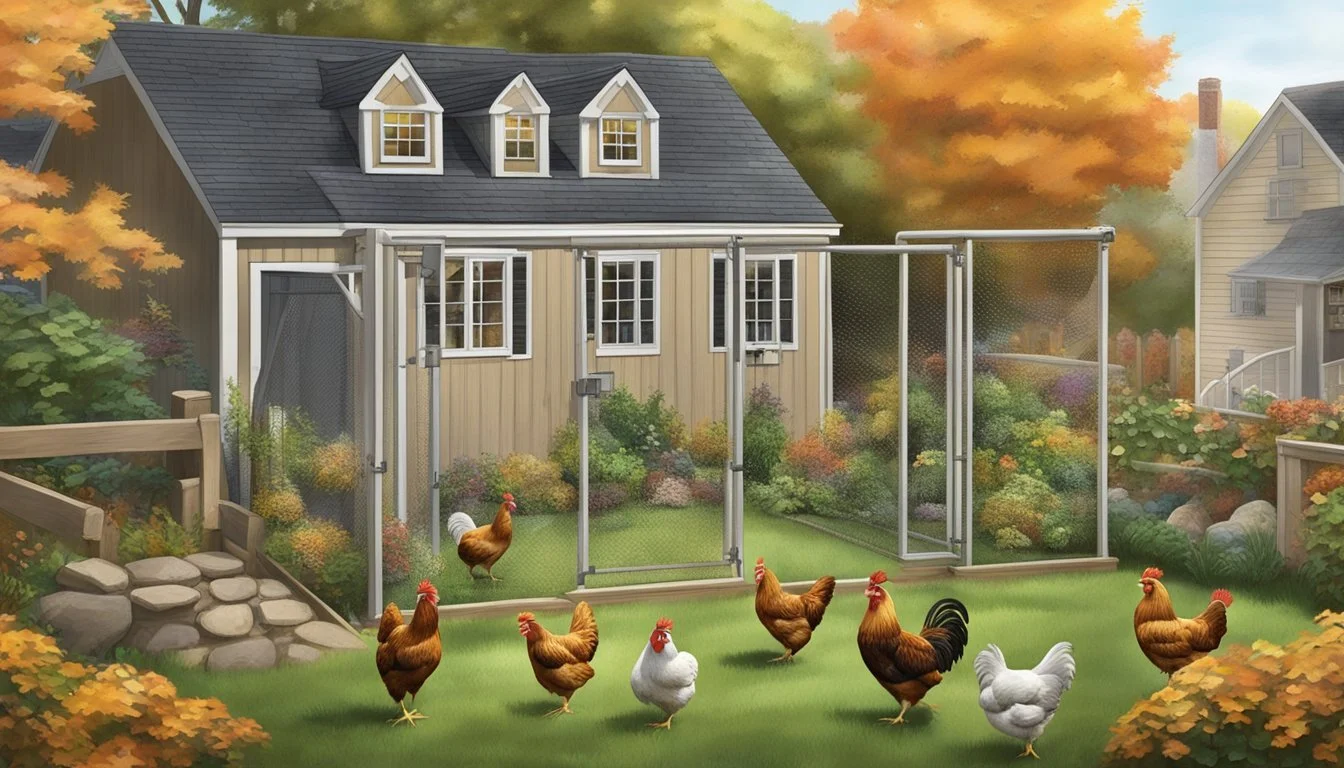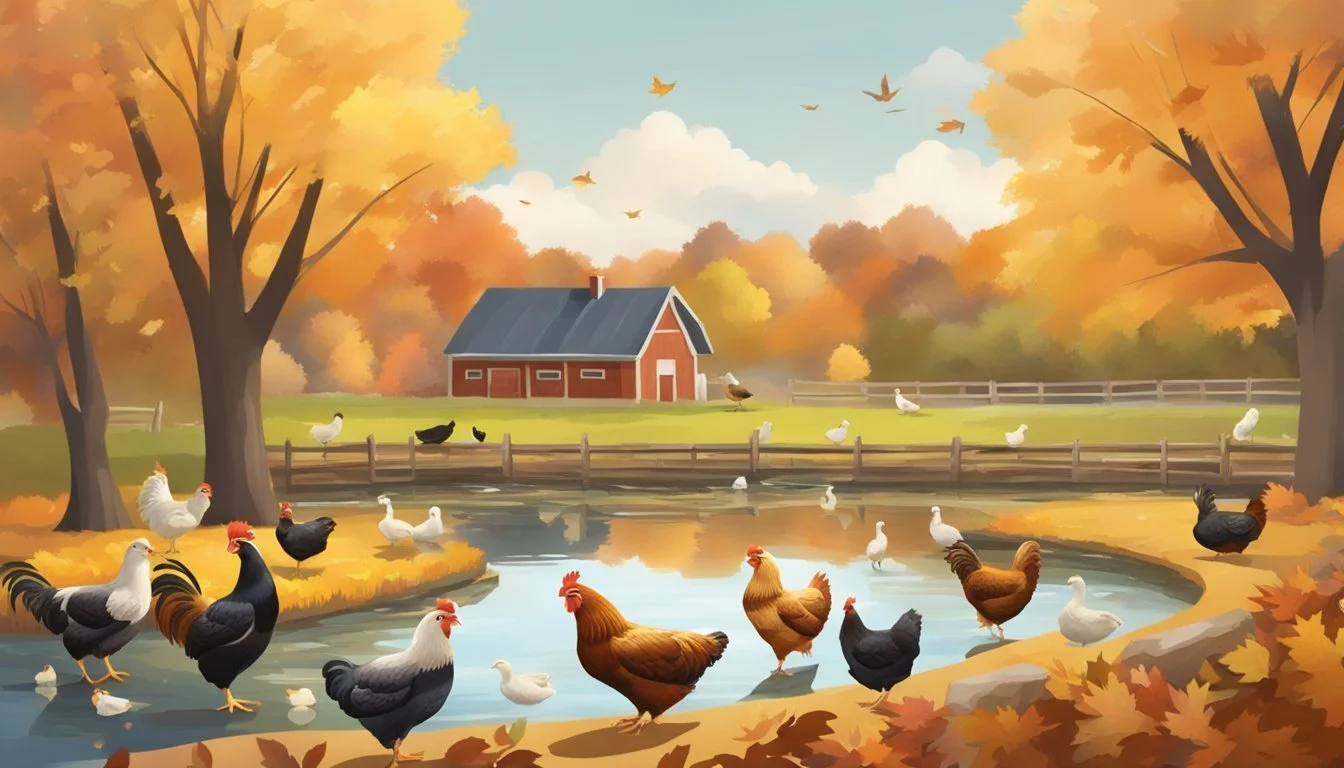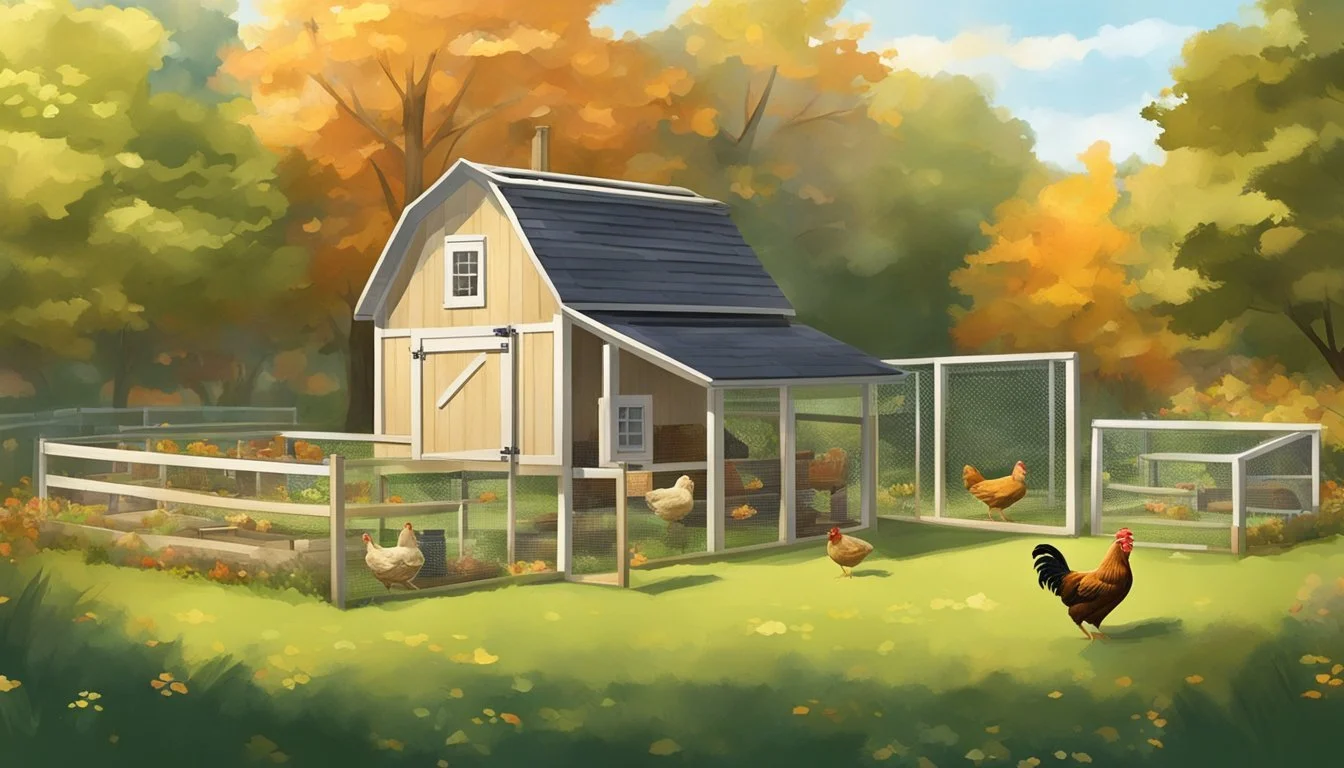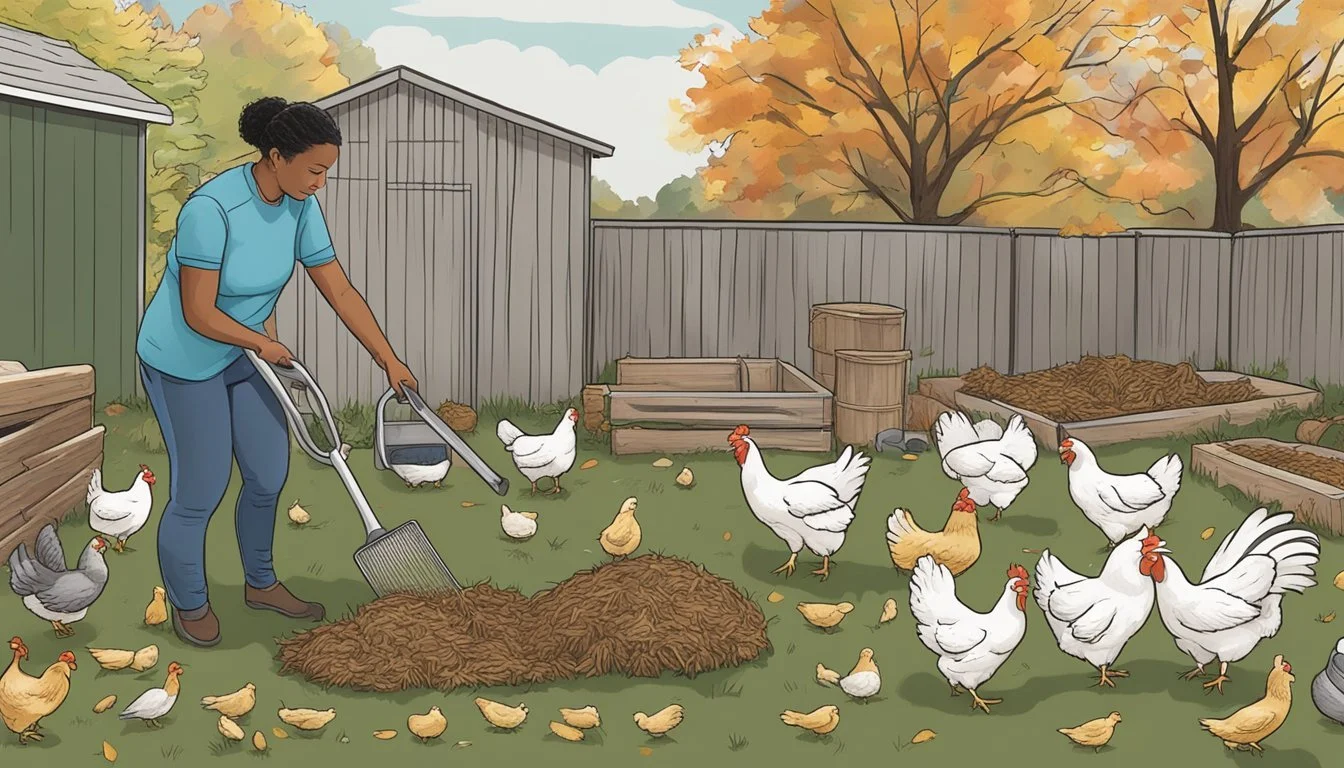Raising Backyard Chickens in Fall River, MA
A Guide to Urban Poultry Farming
Raising backyard chickens can be a rewarding and educational experience, offering fresh eggs and a better understanding of where our food comes from. In Fall River, Massachusetts, the trend of keeping backyard chickens has grown as residents embrace sustainable living practices. Before embarking on this poultry-keeping journey, it's essential for residents to understand the local regulations and requirements that govern chicken keeping in the city to ensure they stay within legal boundaries and maintain good animal welfare.
Appropriate preparation is key to a successful backyard flock in Fall River. This includes choosing the right chicken breed that adapts well to the local climate and ensuring their safety with a secure coop. As with any pet or livestock, chickens require a commitment to their health and environment. A balanced diet, regular veterinary care, and a clean habitat are non-negotiable aspects of keeping these birds.
The local government has a role to play in overseeing backyard chicken operations, especially with regards to health and waste management. Potential owners must check with their city officials about necessary permits and adhere to guidelines for the humane treatment and slaughtering of chickens, if applicable. This diligence promotes community health, prevents the spread of disease, and fosters a positive environment for both the chickens and the residents of Fall River.
Understanding Local Chicken Keeping Laws
When considering keeping backyard chickens in Fall River, Massachusetts, residents must familiarize themselves with specific local regulations that involve zoning and permitting requirements.
Zoning and Permits
In Fall River, regulations dictate that individuals interested in raising chickens must comply with zoning laws specific to their area. The local government may have spacing and location constraints for coops to ensure they are set back from property lines and neighboring dwellings. Residents must also apply for a permit and acknowledge an understanding of the terms and conditions associated with maintaining a flock. It is crucial to note the number of chickens allowed, as this can vary by zone and property size.
Massachusetts Chicken Ordinances
Massachusetts law does not uniformly regulate the keeping of backyard chickens; instead, it allows local regulations to set forth laws and regulations. Throughout the state, including Fall River, these ordinances can mandate that the chickens must be kept in good health and secure from both predators and extreme weather conditions. Proper disposal of chicken waste is required, with composting recommended. Handling noise and odors to avoid nuisances is also often addressed in local statutes. Residents should check with Fall River's local government to understand these restrictions and whether additional Massachusetts laws, such as health and safety codes, apply to their situation.
Planning Your Chicken Coop
When setting up a chicken coop in Fall River, MA, it is crucial to select an appropriate location, design a coop that meets both hen housing needs and local ordinances, and ensure that the structure is secure from predators.
Choosing the Right Location
The ideal location for a chicken coop should be on a spot with good drainage to prevent water accumulation and ensure a dry environment for the chickens. It’s important to have it located in an area that receives sunlight, as this helps maintain the health and well-being of the hens. Fall River regulations stipulate that coops must be placed a certain distance from property lines, so checking with local zoning laws is essential.
Sunlight Exposure: Essential for hens' health.
Drainage: Choose well-drained areas to avoid dampness.
Regulations Compliance: Confirm distance requirements from property lines in Fall River.
Coop Design and Size
When designing the chicken coop, one has to factor in the coop's size to accommodate the number of chickens without overcrowding. This ensures each hen has adequate space for comfort and reduces stress. Ventilation is key to prevent moisture build-up and respiratory issues.
Capacity: Plan for about 2-3 square feet per hen inside the coop.
Ventilation: Essential to prevent ammonia buildup and respiratory problems.
Local Compliance: Make sure the coop design meets Fall River's regulations, which may require a permit and a management plan for the chickens.
Predator-Proofing Your Coop
In Fall River, as in any area, chicken coops must be secure to protect hens from predators such as raccoons, foxes, and hawks. This involves fortifying the coop with wire mesh beneath and around the structure, securing doors and windows with locks, and possibly installing motion-sensitive lighting to deter nocturnal predators.
Fortification: Use hardware cloth, not chicken wire, for better protection.
Locks: Secure all entry points to the coop.
Lighting: Consider motion-sensitive lighting to ward off night-time predators.
By addressing these key areas, one can ensure that their backyard chickens in Fall River, MA, have a safe, comfortable, and legally compliant home.
Selecting Your Chickens
When raising backyard chickens in Fall River, MA, it's crucial to choose the right breed and understand the care that different types of chickens require. Selecting breeds suited to the local climate and deciding between hens and roosters are foundational steps for a successful backyard flock.
Understanding Different Breeds
Different chicken breeds offer varying characteristics, such as temperament, egg production, and adaptability to the Massachusetts climate. Plymouth Rocks and Rhode Island Reds are hardy breeds that fare well in colder weather and are also known for their robust egg-laying. One should consider:
Temperament: Calm breeds like the Buff Orpington are good for backyard settings.
Egg Production: Some breeds, like the Leghorn, are known for a higher egg yield.
Deciding Between Hens and Roosters
The choice between hens and roosters directly impacts the backyard flock dynamics.
Hens are the egg layers and typically less aggressive than roosters.
Roosters are not necessary for egg production and are often more vocal.
Local regulations may limit or prohibit roosters due to noise concerns.
Note: In some locations within Fall River, the number of chickens allowed may be regulated, and roosters might be restricted.
Chick Care and Early Development
Chick care is pivotal for ensuring the growth of healthy chickens.
Brooding: Provide a warm and safe environment for chicks, maintaining a temperature of 95°F for the first week and reducing by 5°F each subsequent week.
Feeding: Offer starter feed and clean water, ensuring that it is accessible and fresh.
Health Monitoring: Routine checks for signs of distress or illness are essential for early intervention.
Proper early care sets the foundation for a healthy and productive flock.
Chicken Health and Safety
Ensuring the health and safety of backyard chickens involves preventative measures against diseases, maintaining cleanliness, and preparing for seasonal weather changes.
Preventing Diseases and Parasites
Chickens in Fall River must be kept in robust health and free of disease. Regular veterinary check-ups can help detect illnesses early. Diseases like Avian Influenza are a concern, so biosecurity measures should be a top priority. Diatomaceous earth can be used in the coop bedding to control parasites.
Vaccinations: Administer necessary vaccines to prevent common poultry diseases.
Pest Control: Use approved methods to reduce the presence of mites, lice, and other parasites.
Maintaining Cleanliness
Cleanliness is vital for preventing illness and parasites. Manure should be properly disposed of, and composting is recommended. Coop cleaning includes:
Daily: Remove and replace any wet or soiled bedding.
Weekly: Clean and disinfect waterers and feeders.
Monthly: Perform a thorough cleaning of the entire coop.
Storage of feed should be secure to prevent attracting pests.
Preparing for Fall and Winter Weather
As fall approaches, checking the coop's insulation and ensuring no drafts are present will help chickens stay warm. In winter, they require a dry and draft-free shelter. Offering a heat source can be beneficial but must be done safely to prevent fires. Water should not freeze, so water heaters may be necessary.
Insulation: Check and fortify the coop insulation before the cold weather sets in.
Ventilation: Ensure proper airflow to prevent moisture buildup, which can lead to respiratory problems.
Feeding and Nutrition
Raising chickens in Fall River, Massachusetts, requires a focus on providing a high-quality diet to ensure the birds are healthy and the eggs are fresh. A balanced diet is crucial for their well-being.
Providing a Balanced Diet
Chickens require a diet rich in proteins, carbohydrates, fats, vitamins, and minerals. The specifics of a balanced chicken diet encompass:
Proteins: Essential for growth and egg production.
Starters: 20-24% protein for chicks up to 6 weeks.
Growers: 14-18% protein for young chickens from 6 to 20 weeks.
Layers: 16-18% protein for laying hens.
Broilers: 20-24% protein for meat chickens.
Vitamins and Minerals: Vital for immune health and bone strength.
Include vitamins A, D3, B12, and E.
Add copper sulfate and phosphorus to their diet.
Carbohydrates: They provide the needed energy.
Common sources include corn, wheat, and barley.
In addition to commercial feed, they should have access to a variety of forage to supplement their diet.
Understanding Seasonal Dietary Needs
Chickens' dietary requirements change with the seasons. During colder months, they need more energy to maintain body heat. Thus, their diet may need higher calorie intake, possibly from more carbohydrates and fats. On the contrary, in warmer months, a lighter diet with an emphasis on hydration and vitamins can help them cope with the heat. It's also ideal to ensure they have enough shade and access to clean water at all times.
Foraging also plays a part in their seasonal diet, where in spring and summer, chickens can naturally supplement their diets with insects, grasses, and seeds found in their environment. However, one must ensure that their foraging areas are safe and free from potentially harmful plants or substances.
Egg Production and Harvesting
For successful egg production in Fall River, MA, backyard chicken keepers must focus on two key areas: optimizing the conditions for laying and ensuring proper egg collection and storage.
Optimizing Egg-Laying
Backyard chickens require specific conditions to maintain consistent egg production. They need 12 to 14 hours of daylight; therefore, supplemental lighting may be necessary during the shorter days in Fall River. A timed lighting system can help simulate the extended daylight hours needed. For optimal production, nest boxes should be provided in a ratio of one box for every four to five hens. These should be filled with clean, soft bedding to encourage laying and prevent egg breakage.
A balanced diet is crucial for egg-laying hens, and they should receive a feed with approximately 16-18% protein to support their needs. Regular access to clean water is also essential.
Egg Collection and Storage
To harvest fresh eggs, it is best to collect them daily from the nest boxes. This frequent collection ensures that eggs are clean and reduces the chances of damage. After collection, the eggs should be wiped with a dry cloth if needed and can be stored at a consistent temperature, preferably in a cool, dry place. Refrigeration can extend the shelf life of fresh eggs.
Egg Storage Tips Details Frequency of Collection Daily Cleaning Method Dry cloth, if needed Storage Temperature Consistent; cool and dry Refrigeration Recommended to extend shelf life
Chickens generally produce eggs with more frequency in their first year, with a gradual decrease in production and egg quality in the following years. Egg size may increase over time, while shell quality can decrease, which emphasizes the importance of proper nutrition and care throughout the hen's life.
Integrating Chickens into the Community
Integrating chickens into the Fall River, MA community involves not only adhering to local laws but also encouraging responsible practices among backyard chicken keepers. The focus is on fostering a community that values fresh produce and urban agriculture.
Engaging with Local Chicken Keepers
Local chicken keepers in Fall River are essential in establishing a supportive community for raising chickens. They are encouraged to connect through various platforms to share tips, experiences, and provide assistance to each other. It is necessary to obtain a permit from the Fall River Board of Health to keep chickens, ensuring that the community standards for health and safety are upheld. Community engagement helps to:
Share knowledge on best practices for chicken care.
Provide support for newcomers in the community.
Discuss strategies for managing chickens in urban settings.
Crucially, community members must also respect the prohibition of roosters within the city limits to minimize noise disturbances.
Selling Eggs and Meat
Selling fresh eggs and meat from backyard chickens can offer an additional benefit to the community, providing access to locally sourced and potentially organic produce. Those interested in selling products must:
Understand and comply with Massachusetts laws regarding the sale, transportation, or importation of live poultry or hatching eggs.
Also, it's vital to:
Develop a written management plan covering aspects like manure and flock health.
Submit documentation for permit application, confirming the adherence to local laws and regulations.
Selling fresh eggs and chicken meat supports the local economy and promotes sustainability, given that the produce is fresh and not subjected to long transportation which can affect its quality.
Differentiating Between Chickens and Ducks
While both chickens and ducks can be valuable additions to a backyard in Fall River, MA, understanding their differences is essential for prospective poultry keepers.
Lifespan and Productivity: Ducks generally have a longer productive period for laying eggs, exceeding chickens by several years. Chickens tend to reduce their egg production after the second or third year. In longevity, ducks can typically live 8-10 years, while chickens have a lifespan of 7-8 years.
Egg Size and Quantity: Ducks lay larger eggs than chickens, with an average duck egg weighing around 70 grams (2.5 oz). Conversely, a typical chicken egg weighs 50 grams (1.5 oz). Ducks can also lay more total weight in eggs annually compared to chickens.
Feathers and Waterproofing: Ducks have naturally waterproof feathers, thanks to a special oil gland. Chickens possess a similar gland, but their feathers are less equipped for water resistance.
Behavior in the Run: In a chicken run, chickens may be more destructive as they are prone to digging and can quickly turn green areas barren. Ducks, however, are less likely to damage the ground since they prefer grazing and do less digging.
Space Requirements: Both birds require adequate space in their coops, reflecting their size and breed. Typically, 2-6 square feet of space per duck is recommended, while chickens need about 3-5 square feet each.
Physical Appearances: A discussion on breed characteristics reveals that ducks can grow to be about 20-24 inches in length and weigh approximately 1.6-3.5 lbs. Chickens on average stand around 2 feet tall.
In essence, both ducks and chickens have distinct attributes that can influence a backyard keeper's decision in Fall River, MA. Each has individual requirements and contributions that need to be taken into account for successful backyard poultry keeping.
Chicken Keeping in Rural vs. Urban Areas
In Rural Areas, the practice of raising backyard chickens is often less restricted. Homeowners generally have more space, which allows for larger coops and flocks. The abundance of land also means that concerns regarding noise and odors are minimized, as neighbors are typically farther apart. Rural keepers may also have fewer predator concerns, as they can implement more robust protection measures.
Conversely, Urban Areas, like cities and towns in Massachusetts, necessitate a more careful approach. Space constraints require urban chicken keepers to often have smaller flocks and coops. Regulations in urban settings are stricter, with specific ordinances on the number of hens allowed, coop construction, and the prohibition of roosters due to noise concerns.
Massachusetts Backyard Chickens: In Fall River, MA, as with many urban areas in the state, potential chicken keepers must research local by-laws. Regulations might include:
Permit requirements
Property line setbacks
Hen limits
Urban Chicken Keepers must prioritize:
Neighbor relations
Odor control
Noise management
Rural Chicken Keepers often enjoy more freedom regarding:
Flock size
Roosters
Coop positioning
Backyard Chickens reflect a trend towards sustainability and self-sufficiency in both settings, despite the differences in approach due to varying local requirements. Regulations serve to create harmony between chicken keepers and their communities, ensuring that the pursuit of raising chickens is beneficial and enjoyable for everyone involved.
Handling Bedding and Waste
Proper bedding and waste management ensures a healthy environment for backyard chickens and mitigates potential issues.
Effective Bedding Strategies
When selecting bedding for chicken coops and runs, pine shavings are commonly used due to their absorbency and availability. It should be laid in a thick layer to absorb droppings and replaced regularly to maintain cleanliness. Straw or hay can also be utilized, but one must ensure they remain dry to prevent mold. The bedding in the coop should be turned frequently to reduce odors and promote drying. For those utilizing the deep litter method, compostable bedding is mixed with manure over time, helping to decompose the waste and improve coop warmth.
Composting Chicken Waste
Composting chicken waste converts manure into a nutrient-rich soil amendment beneficial for gardens. A simple composting structure can be assembled using a bin or a designated composting area. The key components for composting include:
Carbon-rich materials: Dry leaves, straw or sawdust.
Nitrogen-rich materials: Chicken manure and used bedding.
Oxygen: Turn the compost pile every few weeks to aerate.
Moisture: Ensure the pile is moist, but not overly wet.
Layers of manure mixed with the carbon-rich materials should be stacked in the compost bin. One should monitor the temperature to track the composting progress; when done correctly, the center of the pile should become warm. Properly composted waste should not have an offensive odor and will be an excellent fertilizer once fully decomposed.

